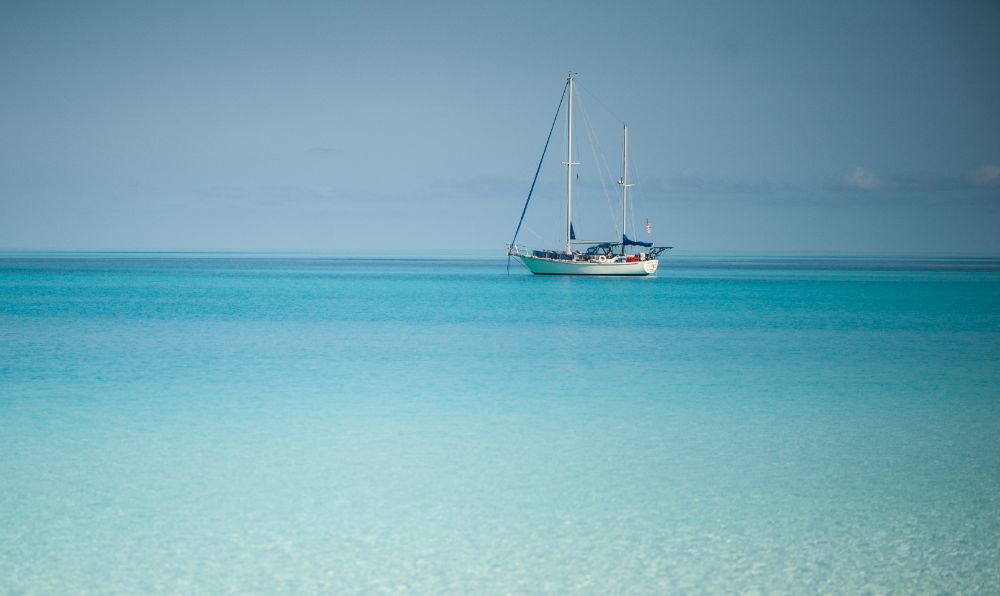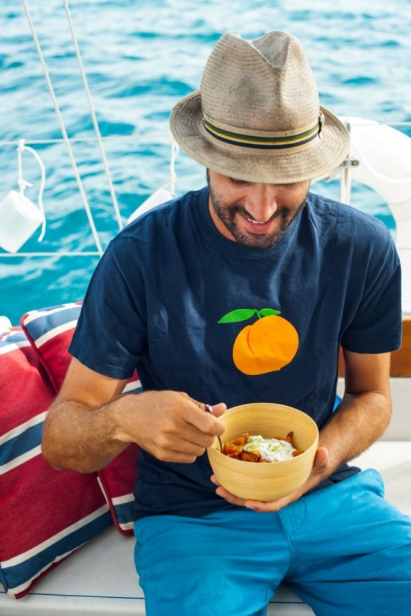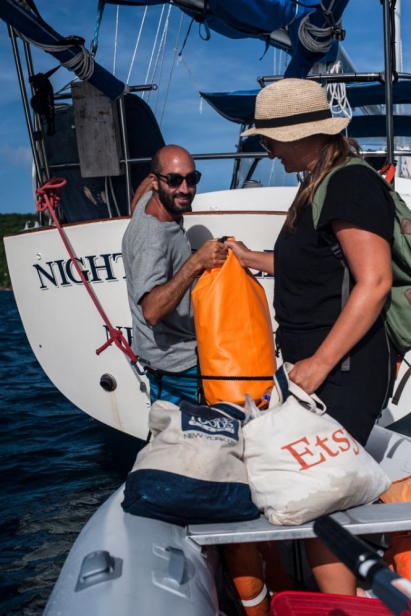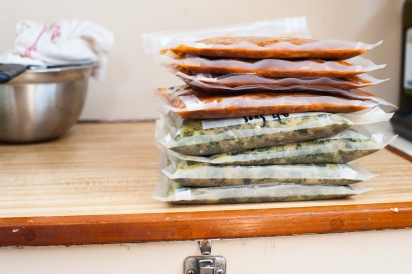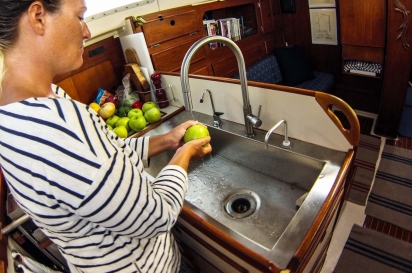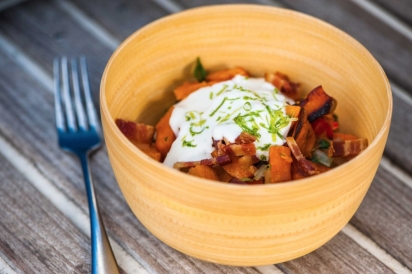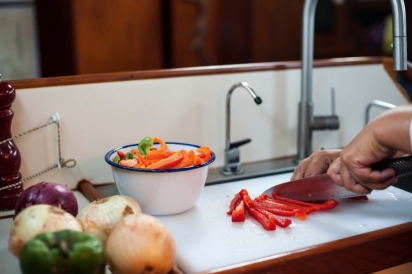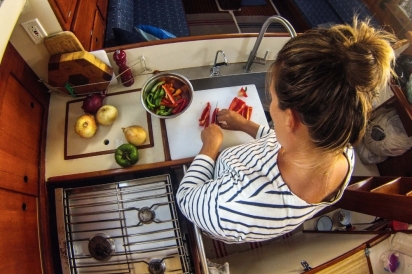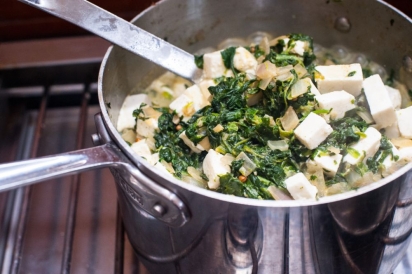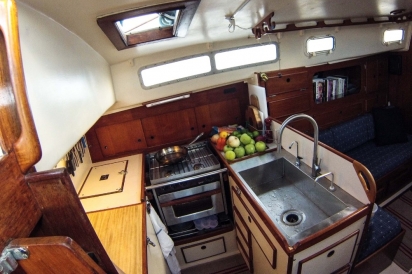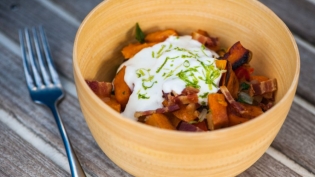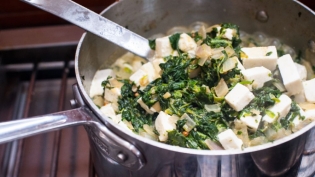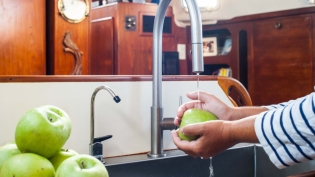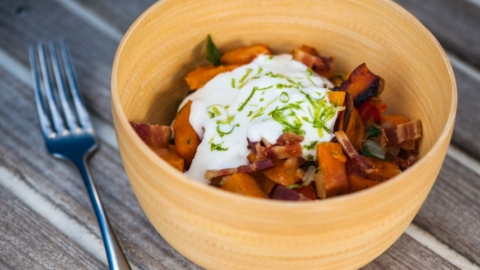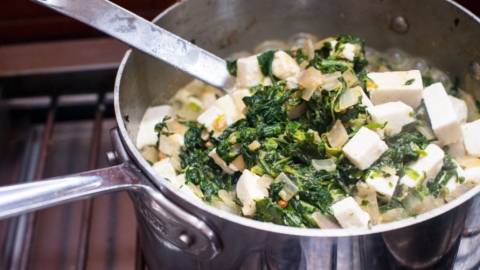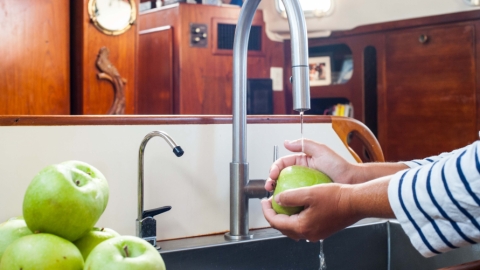Feasting at Sea
Lauren and her husband, Brian, passed through St. Augustine on their voyage to the Bahamas and contacted Edible Northeast Florida for suggestions on sourcing seasonal produce. We gave them some shopping tips, had a tour of their boat (complete with fresh-baked scones) and talked about the challenges of getting fresh, local food as their adventure takes them to remote islands. Most people romanticize life at sea, imagining fresh fish, ample tropical fruit, lush paradise, but the reality is that travel by boat can require creative provisioning and resourceful gathering when opportunities arise.
Bobbing at anchor in the bay of Black Point Settlement, Bahamas, we watch as a cargo ship approaches on the horizon. At long last, the Lady Francis has arrived, carrying supplies and foodstuffs from Nassau. Poised with water-resistant bags in hand, we wait for the right moment to go ashore and receive her bounty.
My husband, Brian, and I had been out sailing our 42-foot ketch, Nightingale Tune, in the beautiful and remote Bahamian island chain known as the Exumas. Three weeks before the arrival of the Lady Francis, we polished off our last morsel of fresh produce: a shriveled Granny Smith apple that we’d paired with cheddar and ceremoniously split, savoring our last bites of something crisp. Ever since, the fruit and veggies on our plates have been foods I’d cooked, vacuum sealed and squirreled away in our solar-powered freezer. With these stocks now depleted, we’ve been counting on Lady Francis to deliver. Through binoculars, we monitor progress on the dock as the men unload her contents. A bundle of pressure-treated wood is lowered onto the dock with a crane, followed by two golf carts and a pallet of laundry detergent. We perk up at the sight of cardboard boxes marked plantains, lettuce and potatoes. As dock hands load foodstuffs onto a waiting truck, we rev the engine of our inflatable dinghy. All across the harbor, we notice the crews of other boats are doing the same.
A line of hopeful sailors forms on the cobblestone path alongside a two-story yellow house with the sign that says “Adderley’s Friendly Store” out front. Inside, we make a beeline for the wooden bin in the back marked vegetables. From a limited selection, we prioritize our durable staples first—bell peppers, onions, carrots, cabbage, sweet potatoes,apples, lemons and limes—before moving on to things we can pickle, cans of coconut milk, tomatoes and anything else that strikes our fancy. We seal up our haul to protect it from salt water damage, hop back in the dinghy and return to Nightingale Tune.
In the galley, provisions are sorted into two piles: things to be cooked or pickled right away and items that will be stored for a while. I spritz the latter with a weak solution of water and bleach to kill any insect larvae that may be lurking before stowing them away. The remainder of the produce will be prepped and cooked immediately, as there is no available space in the boat fridge.
I haul out a massive, propane-saving pressure cooker and begin a marathon cooking session. Bell peppers, carrots and onions soften in coconut milk and a blend of spices to make gallons of vegetable curry. Canned tomatoes are simmered with garlic and frozen basil paste to make sauce suitable for pizza or pasta. Sautéed peppers and onions become a ready-to-use base for dozens of dishes (fish tacos, sweet potato hash, omelets). Citrus is stripped of its zest and juiced. Once cooled, everything is portioned, vacuum-sealed and packed tightly into the freezer, where it will remain until our next last crisp apple is eaten.
Transitioning to life at sea, I was surprised to discover how much strategic problem solving is required for meeting our most basic daily needs. As we continue to sail down the Caribbean chain, where we’ll encounter new ingredients and scarcity of familiar staples, I look forward to finding new ways to make things work. For me, this is cooking at its best.
Want to read more? Follow Lauren and Brian's ongoing galley adventures at sea by visiting their website, www.seabiscuitblog.com .


